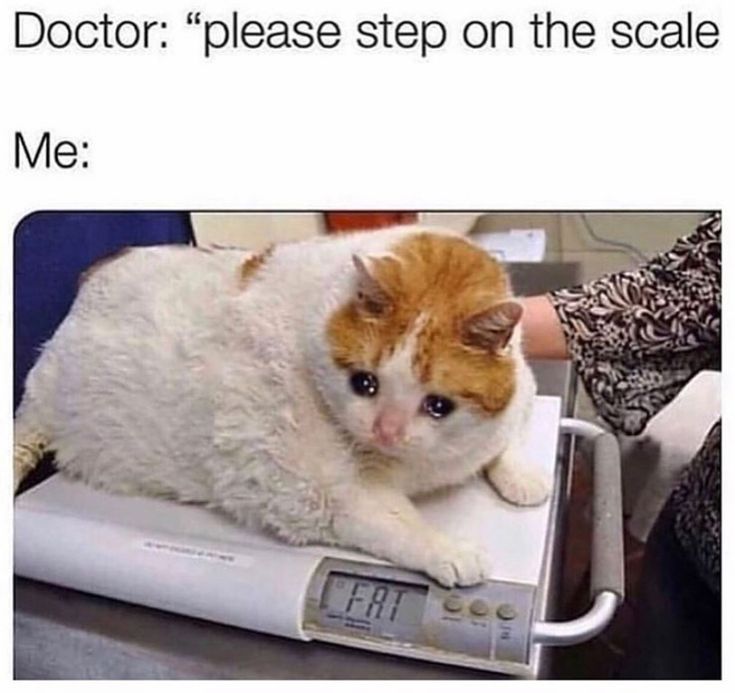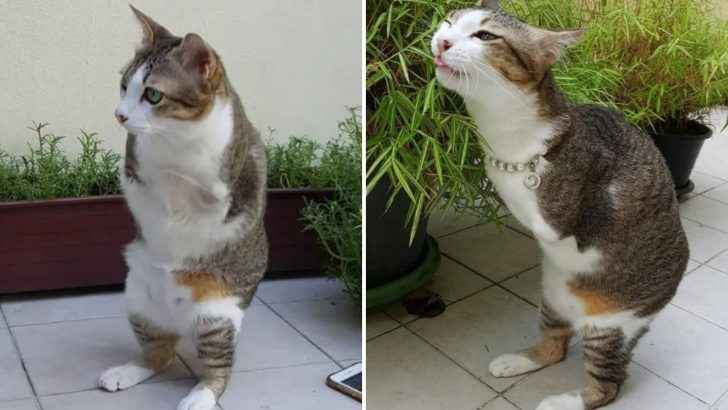Has there ever been a kitty that wasn’t adorable? Probably not—but when it comes to your cat’s weight, the problem is not how she looks. Oh, she may be a cuddly armful and you love her anyway, but an overweight cat is at risk for a wide variety of health problems, such as diabetes, cancer, heart disease, or high blood pressure.
The average cat weighs from 8 to 11 pounds; they’re so tiny that it doesn’t take many extra calories to push them up to an unhealthy weight. Here is how you can tell if your cat is overweight, and a few tips to help you get a fat cat in shape.
WEIGH YOUR CAT
If you have a scale, try to get your pet to sit on it so you can weigh her. If she’ll stand still for a minute you might get an accurate reading. Ideally, monitor your cat’s weight every week.
Remember that weight can vary by breed. Singapura or Siamese cats can weigh a mere 5 or 6 lbs on average, while a Maine Coon or Norwegian Forest cat can way as much as 20 lbs.
GIVE YOUR CAT A PAT-DOWN
If you don’t have a scale, you can try to feel your cat’s sides to see if she’s packing on too many pounds. Try to feel your cat’s rib cage. Put one hand on each side and try to work the fingers under the fur. If you need to press firmly to feel the ribs, or if you can’t feel them, your cat may be overweight.
LOOK CAREFULLY
Sometimes, you can tell if a cat is overweight by a visual exam. When you stand over your cat and look down at her, you should see an indentation above the hips. If this area is bulging out instead, your cat might be overweight. Of course, this method can be more difficult with very furry felines and works best for short-haired cats.
CHECK WITH YOUR VET
A visit to the vet may be a good idea if your cat’s weight is a concern. Your veterinarian can accurately weigh your cat, and can also tell you what your cat’s ideal weight is for her breed. In addition, your vet can check for any signs of obesity-related health problems, and offer you guidance on nutrition and diet for your feline friend.
HOW TO HELP YOUR CAT LOSE WEIGHT
Feed your cat a nutritious weight-control formula food. Make sure to measure out portions and schedule two to four feedings spread throughout the day.
Offer healthy cat treats that are low in fat, such as tiny bits of lean fish, chicken breast, egg white, or plain, nonfat yoghurt. Some cats might even enjoy a few bits of veggies, such as boiled carrots, green beans, or zucchini.
Make sure your kitten gets exercise every day. Playing with your cat is a great way to get her active, and will give the two of you some fun bonding time. A cat wand, laser pointer, ball with a bell in it, or mechanical mouse can be very entertaining. Aim for two play sessions per day lasting at least 15 minutes each.
MONITOR YOUR CAT
As your cat loses weight, her dietary needs may continue to change. Monitor her weight at home or by bringing her to the vet for weigh-ins. Get advice from your vet along the way as your cat gets into shape.
THE ANIMAL DOCTORS CAN HELP
The Animal Doctors are among only 15% of veterinarians in the U.S. who are accredited by the American Animal Hospital Association. We achieve this by upholding rigorous standards in cleanliness, professionalism, patient care, and quality of veterinary medicine. This is why for 40 years we have barely needed to advertise—our satisfied patients always return and recommend us by word-of-mouth.

